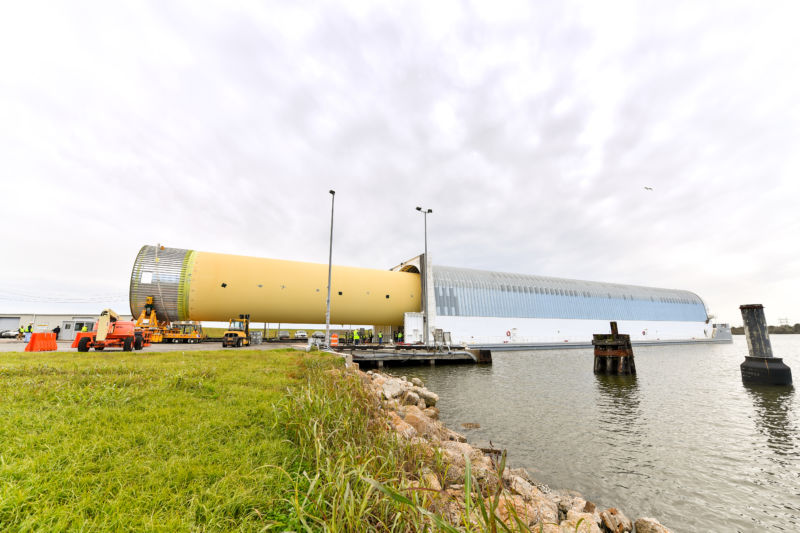

reader comments
599 with 222 posters participating, including story author
Pigs get fat. Hogs get slaughtered. So how come no one has taken the Space Launch System rocket behind the woodshed yet?
We’ll answer that question in a moment. First, some news: on Friday, the space agency announced that it had awarded a contract to Aerojet Rocketdyne to build 18 additional space shuttle main engines for the Space Launch System rocket. The contract is valued at $1.79 billion—so $100 million per engine.
However, this is not the true price of these engines. NASA has previously given more than $1 billion to Aerojet to “restart” production of the space shuttle-era engines and a contract for six new ones. So, according to the space agency, NASA has spent $3.5 billion for a total of 24 rocket engines. That comes to $146 million per engine. (Or 780,000 bars of Gold-Pressed Latinum, as this is a deal only the Ferengi could love.)
The NASA news release says that Aerojet has “implemented a plan to reduce the cost of the engines by as much as 30 percent,” noting the use of more advanced manufacturing techniques. These “savings,” however, are difficult to square with reality.
It is true that the shuttle main engine, or RS-25, is the Ferrari of rocket engines. NASA designed these brilliant engines in the 1970s for the space shuttle program, during which they each flew multiple launches. A total of 46 engines were built for the shuttle at an estimated cost of $40 million per engine. But now these formerly reusable engines will be flown a single time on the SLS rocket and then dropped into the ocean.
There are four engines on a Space Launch System rocket. At this price, the engines for an SLS rocket alone will cost more than $580 million. This does not include the costs of fabricating the rocket’s large core stage, towering solid-rocket boosters, an upper stage, or the costs of test, transportation, storage, and integration. With engine prices like these, it seems reasonable to assume that the cost of a single SLS launch will remain $2 billion in perpetuity.
Just to summarize that for you: NASA is spending at least three times more for an engine that was previously built for reuse, but now is expendable. And in the news release, Aerojet brags about reducing the price of these engines.
There are a lot of things one could buy in the aerospace industry for $146 million. One might, for example, buy at least six RD-180 engines from Russia. These engines have more than twice the thrust of a space shuttle main engine. Or, one might go to United Launch Alliance’s Rocket Builder website and purchase two basic Atlas V rocket launches. You could buy three “flight-proven” Falcon 9 launches. One might even buy a Falcon Heavy launch, which has two-thirds the lift capacity of the Space Launch System at one-twentieth the price, and you’d still have enough money left over to buy several hundred actual Ferrari sports cars.
Or, again, you could buy a single, expendable rocket engine.
Speaking of engines, SpaceX is building the Raptor rocket engine to power its Super Heavy rocket and Starship upper stage. The Raptor has slightly more power at sea level than the RS-25 and is designed for dozens of uses. According to SpaceX founder Elon Musk, it costs less than $1 million to build a Raptor engine. The company has already built a couple dozen of them on its own dime. So there’s that.
Anyway, the original question concerned why the SLS rocket has not been canceled. You didn’t need to read this article to find the answer—it’s right there on NASA’s website: “Men and women in all 50 states are hard at work building NASA’s Deep Space Exploration Systems to support missions to the Moon, Mars, and beyond.”


